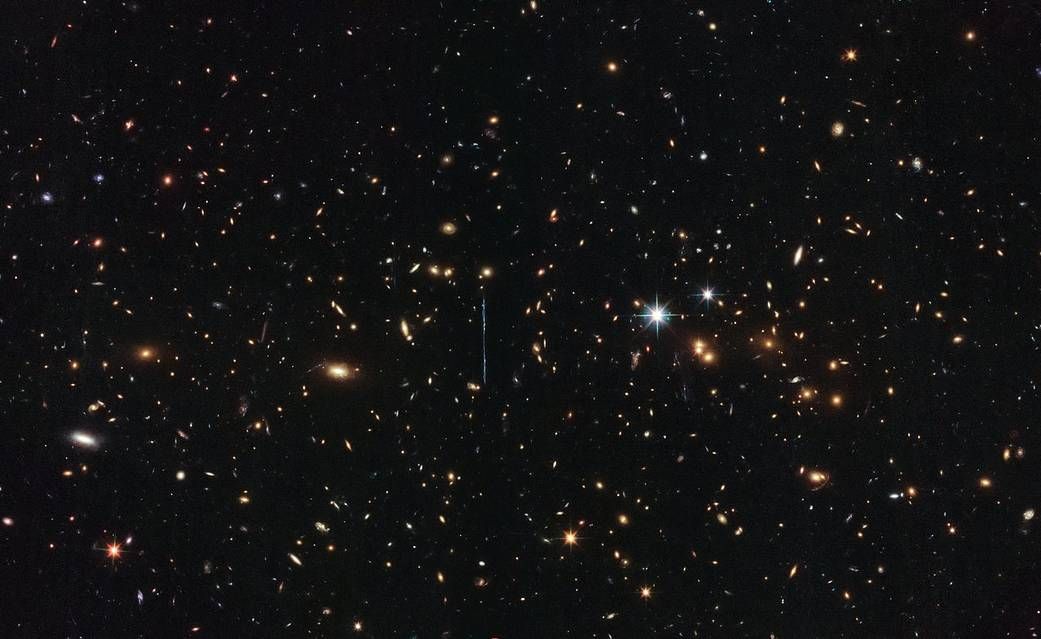
A NASA and the European Space Agency's Hubble Space Telescope photo features the largest galaxy cluster ever discovered. It is so large that it weighs in at three million billion suns.
The massive galaxy—nicknamed "El Gordo," which means "the fat one" in Spanish—had its mass first calculated in 2014. It is technically known as ACT-CLJ0101-4915, but we'll stick with El Gordo. This X-ray galaxy cluster is the largest, hottest and brightest discovered, according to NASA's press release from Tuesday. The galaxy cluster is bound together by gravity, which is the same force that keeps us grounded onto Earth, and they can take billions of years to form.
Scientists discovered the cluster's mass by measuring how much the gravity from the cluster warps images of galaxies in the background. The greater the gravity distorts the images as if they were a funhouse mirror, the more mass the galaxy cluster has, according to NASA's press release when its mass was first found in 2014.
In 2012, El Gordo was composed of two different galaxy clusters that were colliding at millions of miles per hour, as observed by the European Southern Observatory's Very Large Telescope, NASA's Chandra X-ray Observatory and the Atacama Cosmology Telescope. The way in which these types of galaxies form is difficult to understand, as it depends on dark matter and dark energy.
Hubble revealed back in 2014 that El Gordo's mass was hidden in the form of dark matter. Much of its regular matter was made of hot gas, which is being ripped from the dark matter during the two clusters' collision.
A second galaxy was recently photographed by NASA's Hubble and Spitzer space telescopes—but this one is much smaller, weighing in at 3 billion suns. The "needle-in-a-haystack" galaxy, per NASA, is the farthest galaxy discovered so far that has been seen in an image. The image has been stretched and amplified through a special process called gravitational lensing. The difficulties of documenting the image are due to the same warping mechanism caused by gravity. The gravity of a foreground object can brighten and distort background images, which is what occurred with the SPT0615-JD galaxy that is extremely far away.

"This galaxy is an exciting target for science with the Webb telescope as it offers the unique opportunity for resolving stellar populations in the very early universe," Brett Salmon, lead author of the study and postdoctoral researcher at the Space Telescope Science Institute in Baltimore, said in a statement on Thursday. Salmon presented his research at the 231st American Astronomical Society meeting this week.
Uncommon Knowledge
Newsweek is committed to challenging conventional wisdom and finding connections in the search for common ground.
Newsweek is committed to challenging conventional wisdom and finding connections in the search for common ground.
About the writer
Sydney Pereira is a science writer, focusing on the environment and climate. You can reach her at s.pereira@newsweekgroup.com.
To read how Newsweek uses AI as a newsroom tool, Click here.








